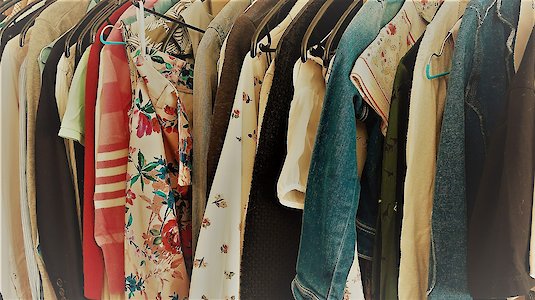"Second hand is not second class" and "Design for Recycle": this is how the Textile Dialogue 2022 can be summarised
With about 70 players from the textile retail and production sector, interest groups, second-hand clothing platforms and re-use initiatives, the topic "Closing the loop - supporting the circular economy in quick steps" was discussed in an online event on 10 June. was dealt with.
After introductory words by Andreas Tschulik from the BMK on the topic of "Sustainable textiles in the focus of the circular economy", the contents were dealt with in two thematic blocks and working groups.
Second hand does not smell
Which offers from the areas of second-hand trade, rental offers, exchange models and repair initiatives of clothing and which innovative business models are already established in Austria and how can they contribute to the circular economy strategy? Daniela-Freitag Zanini from the Federal Environment Agency spoke on this topic.
The offer - online and stationary - is large in Austria. In Vienna alone there are about 100 possibilities to get second-hand fashion, with offers of designer and vintage clothing strongly represented. Online, shoes dominate the offer because they have a high resale value. One problem of online second-hand trade is to present the range of individual items in an appealing and clear way. Here's a tip: pre-selection is crucial, acceptance increases with quality - the longstanding mindset "second hand stinks" has changed. This can be seen in various success stories such as that of Robin Balser's second-hand vintage shop „VinoKilo“. VinoKilo is present in several countries and sells 97% of its clothes at sales events with music, food trucks and party atmosphere.
Recycled fibres
What role do secondary raw materials play for the Austrian textile industry and what future potential do they have for the circular economy?
The recycling of textiles is a key to the circular economy and necessary to conserve valuable resources. Austria has a competitive advantage from its textile tradition, especially in the field of fibre production. Karin Granzer-Sudra and Marcus Feldbaumer from the Austrian Society for Environment and Technology presented a study on the topic and the limits of reprocessing used fibres. In research to develop new methods, the holistic view of a product design is important, but so are smart sorting and recycling systems.
Klaus Haiden from Andritz Fabrics and Rolls complemented from the practical side with an input on the TEX2MAT project.
Active participation in working groups
To round off the workshop, working groups dealt with the topics of textile design & innovation, supply of textiles/clothing purchase and longer use, and textile recycling & material use. Further initiatives in these areas were collected and the measures taken for recyclable textiles were presented.
To summarise:
The re-use of clothing - especially considering that 49% of clothing is discarded because it is no longer liked but still functional - should be promoted. There are enough offers for this!
But that alone is not enough: the reprocessing of textiles is a key to the circular economy and necessary to conserve valuable resources. Therefore, the Austrian Ecolabel and the EU Ecolabel for textiles demand a corresponding percentage for the origin of polyamide and polyester fibres.
Currently, the Austrian Ecolabel guideline for textiles is being revised in cooperation with the German Blue Angel and will be published at the beginning of 2023.
At the federal level, the Austrian circular economy strategy is to be adopted in the near future. Parallel to the development of the strategy, the first implementation steps have already been taken, promoted within the framework of the RTI initiative Circular Economy.
The entire documentation of the event will be published in the coming days and then also linked here.
